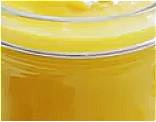Il Sodium coceth sulfate is an ethoxylated (ethylene oxide-treated) anionic surfactant with few petrochemical molecules and little aggression on the skin.
The name describes the structure of the molecule:
- "Coceth" indicates an alkyl group derived from the mixture of fatty alcohols from coconut
- "sulfate" efers to the sulfate group that imparts the negative charge to the compound
The raw materials required to form Sodium coceth sulfate are:
- Fatty alcohols derived from coconut. Fatty alcohols are extracted and purified from coconut to obtain the basic components for the synthesis of the surfactant.
- Sulfuric acid. Sulfuric acid is used for the esterification of fatty alcohols, reacting with them to form coceth alkyl sulfate.
- Sodium hydroxide. It is used to neutralize coceth alkyl sulfate, forming the desired Sodium coceth sulfate.
It is chemically extracted from coconut oil to obtain the sodium salt of the sulphate esters of the polyethylene ether of coconut glycol.
The synthesis process takes place in different steps, e.g:
- Preparation of fatty alcohols derived from coconut, which are the main raw material for the synthesis of the surfactant. This may involve extracting fatty alcohols from coconut and subsequent purification.
- Esterification of fatty alcohols with sulfuric acid to form coceth alkyl sulfate.
- Neutralization of coceth alkyl sulfate with sodium hydroxide to form the desired sodium coceth sulfate.
- Filtration and bof sodium coceth sulfate to remove any impurities.
- Characterization of the product through chemical and physical analyses to confirm its identity and assess its quality.
- Packaging of sodium coceth sulfate into appropriate containers for distribution and commercialization.
It appears as a yellowish or whitish paste.

What it is for and where
Used in cosmetics for liquid detergents, shampoos etc.
It is very similar to Sodium Lauryl Sulfate, which is extracted from laurel.
Cosmetics
Surfactant - Cleansing agent. Cosmetic products used to cleanse the skin utilise the surface-active action that produces a lowering of the surface tension of the stratum corneum, facilitating the removal of dirt and impurities.
Cleansing agent. Ingredient that cleanses skin without exploiting the surface-active properties that produce a lowering of the surface tension of the stratum corneum.
Surfactant - Cleansing agent. Cosmetic products used to cleanse the skin utilise the surface-active action that produces a lowering of the surface tension of the stratum corneum, facilitating the removal of dirt and impurities.
Safety
Component considered safe but which degrades fairly quickly.
The term 'eth' of "coceth" refers to the ethoxylation reaction with ethylene oxide after which residues of ethylene oxide and 1,4-dioxane, chemical compounds considered carcinogenic, may remain. The degree of safety therefore depends on the degree of purity of the compound obtained. No manufacturer appears to provide this information on the label, at least as of the date of this review.
Synonyms:
- Sodium polyethylene glicol (1-4)
- Sodium polyoxyethylene (1-4)
- Coconut ether sulfate
References_________________________________________________________________________
Onzo A, Acquavia MA, Cataldi TRI, Ligonzo M, Coviello D, Pascale R, Martelli G, Bondoni M, Scrano L, Bianco G. Coceth sulfate characterization by electrospray ionization tandem mass spectrometry. Rapid Commun Mass Spectrom. 2020 Oct 30;34(20):e8884. doi: 10.1002/rcm.8884.
Bährle-Rapp, M., & Bährle-Rapp, M. (2007). Sodium Coceth Sulfate. Springer Lexikon Kosmetik und Körperpflege, 508-508.
![]() Sodium coceth sulfate
Sodium coceth sulfate 


